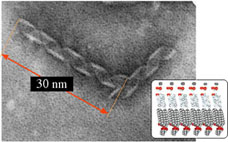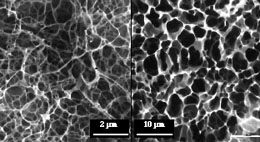
| in Japanese | 
| in English |

| in Japanese | 
| in English |
 Organic nanotubes published in 1984 |  Organic nanotubes on the basis of uni-lamellar bilayer membranes |  Nanohelical aggregates on the basis of uni-lamellar bilayer membranes |  Template polymerization using nanohelical bilayers |
 Key compound |  Xerogels from self-assembled organogel |  Polymeric organogel |
 Porphyrin organogel |  Fluorescence organogel |  Optically active films from organogels |
 Polymer grafting |  Separation for molecular size |  Separation for position isomers |  Separation for cis/trans |  Separation mechanism |
 Core-shell type with silica particle-monolayer |  Polymer-grafted Fe nanoparticles |
 Polypeptide particle |  Polypeptide particles |  PMLG spheres for Immunoassay |  Porous chitosan particle |
 Sphering & functionalization |  Cellulose particles |  Colored cellulose particles |  Application for Skin-care |
 Poly(L-lysine) |  Poly(L-Ala) & poly(L-Leu) |  Carbonyl-pi interaction |

|